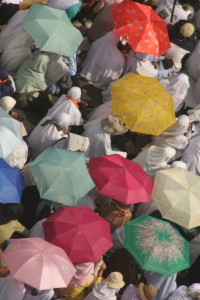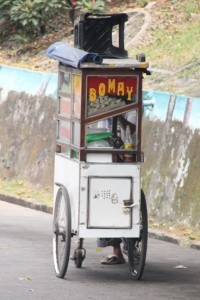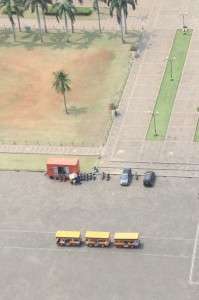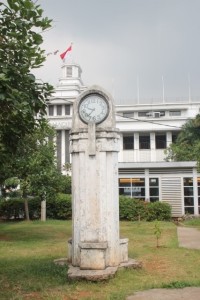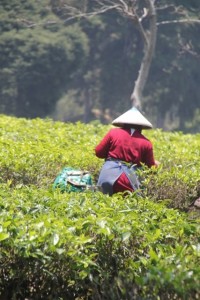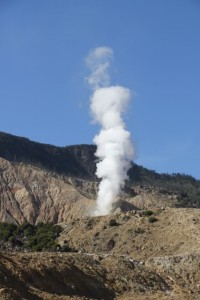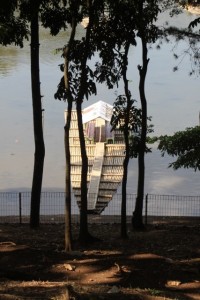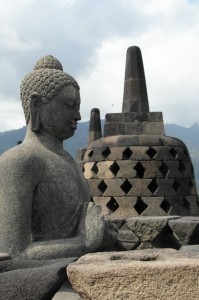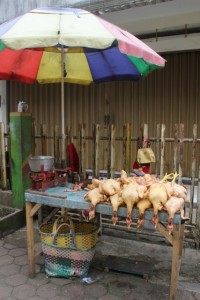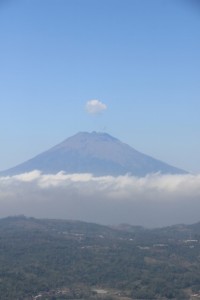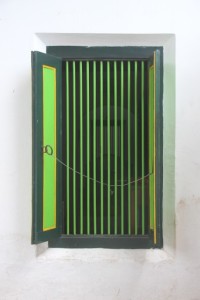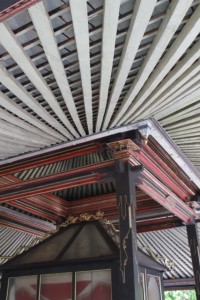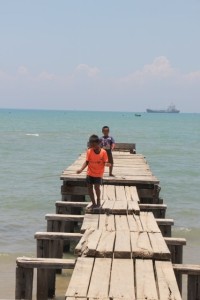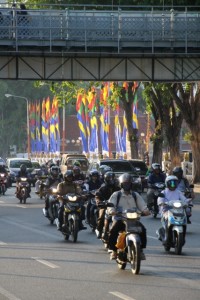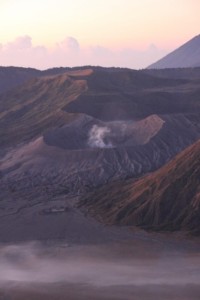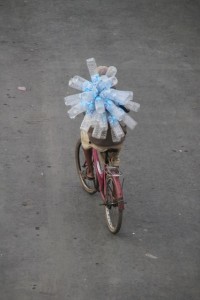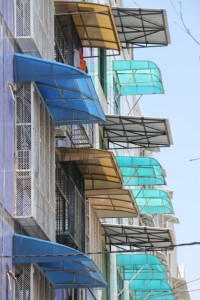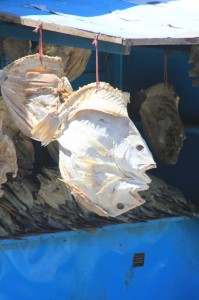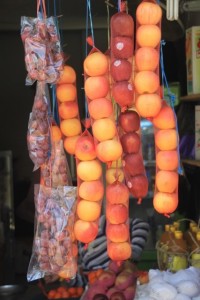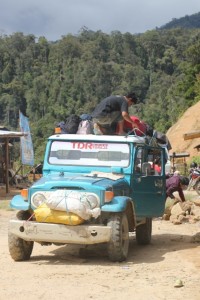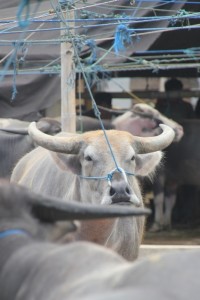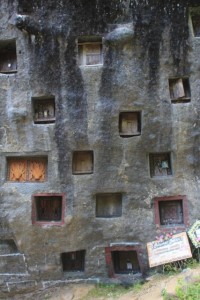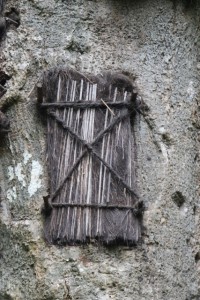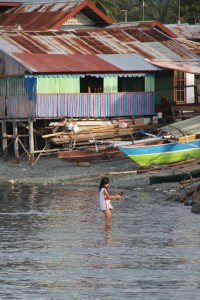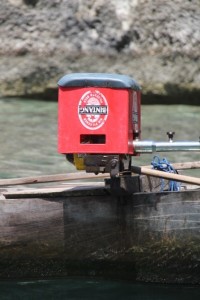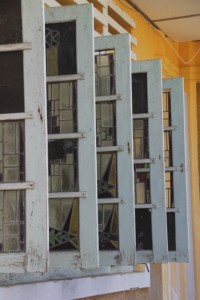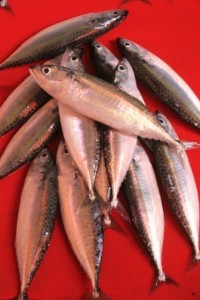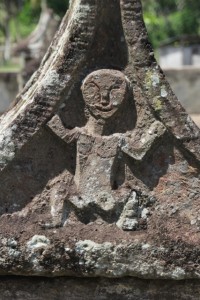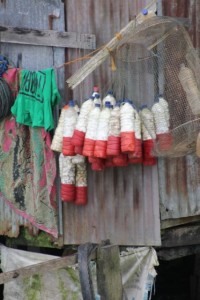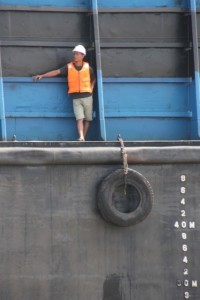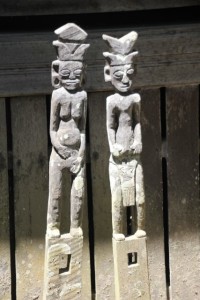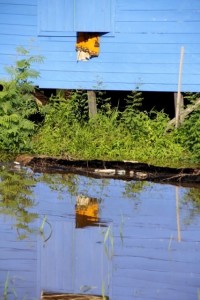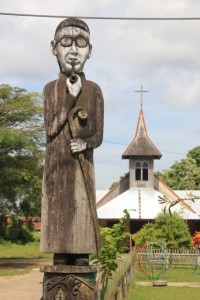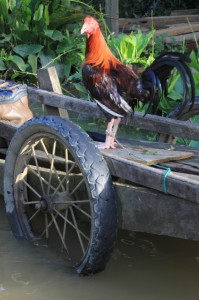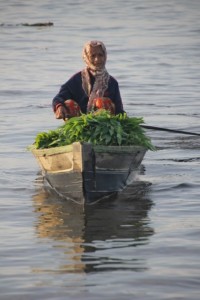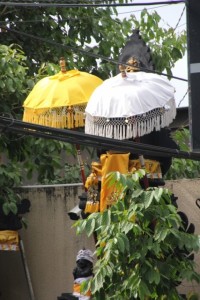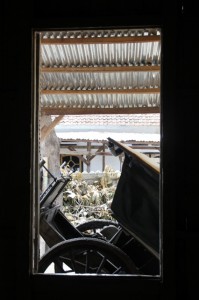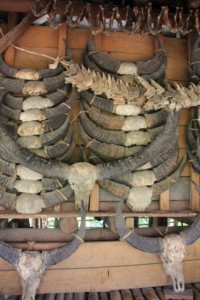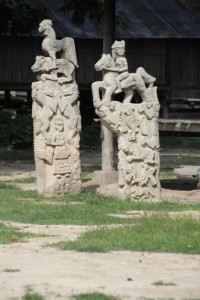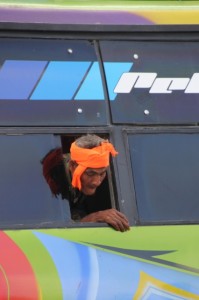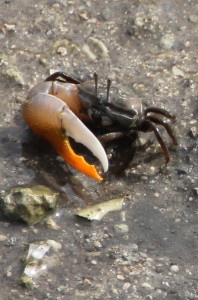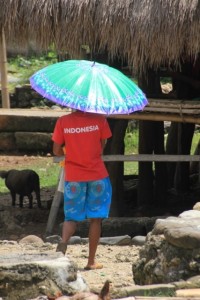 In the last three months of 2013 we traveled through part of Indonesia: Java, Sulawesi, Kalimantan and then via Bali to Sumba. We kept a travelogue, in blog-form, a mix of on-the-spot experiences and observations with some background knowledge derived from an earlier stint in Sumatra in 2006/2007, and the usual selection of books. Plenty of photographs accompany the travelogue, which I have re-arranged below for easy access and reading, from start to finish.
In the last three months of 2013 we traveled through part of Indonesia: Java, Sulawesi, Kalimantan and then via Bali to Sumba. We kept a travelogue, in blog-form, a mix of on-the-spot experiences and observations with some background knowledge derived from an earlier stint in Sumatra in 2006/2007, and the usual selection of books. Plenty of photographs accompany the travelogue, which I have re-arranged below for easy access and reading, from start to finish.
01. the idea
Indonesia has always fascinated me. Partly this it because of my Dutch origin, and my interest in recent history – not necessarily a pretty combination. Dutch literature, much of it related to the colonial Dutch Indies, certainly triggered interest, too. But mainly it is just the thrill of an island nation, so vast, with so many different cultures, habits, languages, and even religions (despite the dominance of Islam).
02. the plan
Where do you start, exploring Indonesia? Anything between 10,000 and 40,000 islands, depending on what source you trust most, 17508 being the number most often quoted.
03. the transport
You know us as independent travelers, not the pre-booked tour-type. So the only thing we have arranged so far is our flight into, and out of, Jakarta – the start and the end of our trip. In between, we’ll see how we get from place to place. We have always operated based on the concept that the way to get somewhere is often just as much fun as the final destination itself (although there have been exceptions…), and, within limits, slow travel is to be preferred over fast travel.
04. the pre-departure blues
Three days to go, and everything is ready. Rather unusual: on previous occasions there were always so many last minute things to do, to organize, to arrange. Suspend subscriptions, you don’t want to find three months worth of newspapers on your doormat when you come back. Make sure all the bills have been paid: you don’t want a stack of bailiff notices that got lost in between those newspapers, either, when you come back.
05. the arrival
We made it, just in case you were wondering. Twenty-one hours door-to-door, of which fourteen in a plane. And Indonesia is still as we left it, six years ago, full of people smiling, friendly, helpful; this is what we had come to appreciate so much in the year we lived here.
06. Jakarta: A modern city, more big than beautiful, with in the centre some traces of the old colonial past left, including a somewhat hidden cemetery.
I don’t like Jakarta. I didn’t like it some years ago, and I still don’t like it. The problem with Jakarta is that it lacks a soul. The city is huge, it takes well over an hour with a taxi to get from the airport to our hotel in Thamrin, the neighbourhood considered by most to represent the city center.
07. Batavia: The centre of the old Batavia was what is now the Kota neighbourhood of Jakarta, and it shows. Even the harbour of Sunda Kelapa fits in the image of the colonial past.
Batavia doesn’t exist anymore, of course. The former Dutch colonial capital became Jakarta at Indonesian Independence. But in the Kota neighbourhood the old Batavia is still visible, albeit in the form of mostly dilapidated buildings. Some are no more than a roofless shell, others are about to reach that state, but obviously there has been some restoration going on. The museum-turned old town hall, dating from 1627, stands splendidly at one side of the old cobblestone square.
08. Bogor: Bogor is home to the more than 200 year old brilliant Botanical Gardens, a spectacle of trees, plants and flowers, especially its orchids. Getting there is a whole different story.
Bogor is less than an hour’s drive from Jakarta – if there is no traffic, which almost never happens. With traffic, for instance on Sunday mornings when all of upper-middle class Jakarta takes off for a day in Bogor, it easily becomes a three hour ordeal. We could have rented a car, of course, the easy solution, and become part of the ordeal, but to defy the notion of using public transport so early in the game, would be tantamount to admitting defeat even before the battle had begun.
09. Pelabuhanratu: An attractive fishing town on the South coast of Java, with a colourful harbour full of large and small boats, and an active fish market.
On the southern side of Java, south of Bogor, is the fishing town of Pelabuhanratu. We took a bus to get there, fairly comfortable, air-conditioned, that’s all OK. It is just that there are no traces anymore of these impressive four-to-eight lane roads we saw in Jakarta. Two lanes, potholed, is all we get, which needs to be shared with frequently overtaking traffic from the opposite direction, and with motorbikes. Along this road we also begin to appreciate how densely populated Java actually is.
10. the journey
When I read about the Malabar Tea Estate, a plantation outside the town of Pengalengan, south of sprawling Bandung, I wanted to go. They have a guest house, so would be nice to stay there for a few days. And getting there, for us public transport experts, should be a piece of cake. Right!
11. Malabar Tea Estate: The perfect retreat on West Java, away from bustling Bandung and Jakarta, except that there is little to do – and there is nobody; perhaps that is the attraction.
The longer we stayed at the Guest House of the Malabar Tea Estate, the more we got the impression of unrealized potential. The plantation is huge, tea as far as the eye can see, even after having climbed the hills. The Guest House is, in fact, the beautiful old planter’s house, probably well over a 100 years old, which has been turned into a lobby and dining room with a lot of character. Outside are a few wooden bungalows, with views over the tea-covered hills, and a block with nine modern rooms, attractively and comfortably furnished, each with a terrace in front, looking out over the lawn. Immaculately kept. Flower beds, not quite the Bogor Botanical Gardens, but impressive nevertheless.
12. Cipanas: A village around a hot water spring, which is being exploited by the local hotels, and close to one of the most spectacular volcano craters of Java, Papandayan.
Cipanas means hot water. There are many Cipanases in Indonesia, this one is close to the provincial town of Garut, which lies nestled in a valley surrounded by volcanoes. Volcanoes were the main reason for coming here, but we are not averse to hot springs, of course, so we booked ourselves into a really nice hotel, not only with spring water swimming pool, but also with spring water piped directly to the bath and shower in your room. I am still trying to get rid of the sulphur smell, after an indeed invigorating bath.
13. Kampung Naga: An original Sunda village in between picture-perfect rice padis.
What we know as Indonesia, is in fact a collection of different groups thrown together in an ethnic melting pot. The original West Javanese culture is that of the Sunda, one of the biggest population groups, who have historically occupied the highlands. Of course, cultural differences, also in Indonesia, are increasingly disappearing with ever further integration, but there are pockets of Sundanese that remain proud of their heritage.
14. the bamboo raft
Another thing we did around Garut was visiting a little 8th Century temple, called Candi Cangkuang (candi means temple). Admittedly, we didn’t go for the temple, which is indeed very small, and not very special, but for the setting, on a small island inside a lake, and the transport to the island, on bamboo rafts. You may have noticed that, as a side issue, we have taken an interest in the various ways of transport In Indonesia, and a bamboo raft, that needs to be tried.
15. Yogyakarta (1): A very pleasant train ride to what is reputed to be one of Indonesia’s nicest cities; touristic it is, but not disturbingly so, and different modes of transport are endless.
Not yet having regained our faith in the public busses, and being offered the opportunity, we took a train from Tasikmalaya to Yogyakarta. And with a train I mean a train, this is how long distance travel was always supposed to be.
16. Borobudur: Borobudur is the most preeminent tourist site in Indonesia, a Buddhist temple of impressive size and architecture as well as a gallery in stone of some exquisite bas-reliefs.
It’s somewhat ironic that the two biggest tourist attractions in Indonesia – the largest Muslim nation in the world – must be a Buddhist temple, and the beach paradise of Bali, thanks to its Hindu culture about the only place where as a woman you can get into the sea in a swimsuit. Bali we won’t do, averse as we are to tourists, but Borobudur is a must-see.
17. Wonosobo: Wonosobo is not only a good base from which to approach the Dieng Plateau, it is a very nice town in its own right, with lots of novel initiatives.
The reason one comes to Wonosobo, is to visit the nearby Dieng Plateau. It is just that Wonosobo has much better facilities than the small village of Dieng, worth the one hour commute up to the plateau in the morning, and back again later. But Wonosobo has much more. Having been encouraged by our bus trip to Borobudur, we had once again opted for the bus, which worked pretty well, including transfer, and we arrived not too much later than we had been told we would arrive. But we arrived in the pouring rain. How to get to our guest house, the one we booked the day before? Oh, just take a taxi. A taxi? Wonosobo has radio taxis, equipped with meters and with GPS! So somebody just radioed a taxi for us. Right, but in the pouring rain? In London or New York, that would be a 45 minute wait if you are lucky. Not so in Wonosobo, within two minutes the taxi was there, the taxi driver even got out – in the still pouring rain – to get our bags (try that in London or New York), and another five minutes later we arrived in our guest house.
18. Dieng Plateau: Perhaps it wasn’t our day, but the Dieng Plateau was not as spectacular as we had expected, in fact, it was hugely over-developed.
The expectations were high for the Dieng Plateau, reason that we went out of our way to get here. Various sites and guidebooks speak lofty about “spectacular landscapes” and “beautiful settings”, and the promise of bubbling mud pools, craters with steaming sulphur smoke, emerald green lakes and some of the oldest Buddhist temples in Java must be enough to draw the most skeptical tourist to this volcanic plateau. Well, maybe.
19. Bandungan: Another developed tourist spot around Hindu temples, but with the most amazing volcano views.
Bandungan was, and I suppose still is, a hill station away from simmering Semarang, at the north coast of Java. We came from the other side, of course, from Wonosobo, so never made it to the real heat of the coast. The place is teeming with hotels, but many a little seedy. Interestingly, when we booked our room, via the booking site Agoda, only one hotel showed up, which turned out to be an almost empty government-type of hotel. Eerie atmosphere of abandonment; large pool, with water, but only one deck chair, half broken. Karaoke is on offer everywhere – except our hotel – and as it was a public holiday, we were treated from afternoon to late night.
20. Ambarawa: The story of a closed railway museum in Ambarawa and a simple lunch in an institution in Magelang.
The only reason to come to Ambarawa, a not particularly attractive town on the busy Semarang-Yogyakarta road, is to visit the railway museum here. I am not a particularly keen railway enthusiast, but I do appreciate train travel, and the charm of old railway stations, which in Ambarawa is the Koning Willem I station of 1873 and happens to be the center of the museum around which the ancient rolling stock has been set out. And since we were in Bandungan, very close to Ambarawa – no, we didn’t come specifically for the museum – we decided to give it a try.
21. Yogyakarta (2): Perhaps the most popular tourist town in Indonesia, Yogya’s attraction outside the Kraton is mostly from the unexpected, off-the-beaten track experiences.
Yogya is one of the two royal cities of Java, the other being the Solo. Home of the Hamengkubuwono dynasty, the present sultan of that name being the tenth generation, the city has occasionally played a political role in it 250 year existence, but by now is mostly recognised for is cultural role, promoting the traditional Javanese arts – thanks to generous support from the sultan and other royals.
22. Prambanan: A second impressive temple complex outside Yogya, just as evocative as Borobudur, but more spectacular in its first impression.
The other ancient temple complex outside Yogya is Prambanan. Where Borobudur is a Buddhist temple, built by the Sailendras dynasty, Prambanan, built around the same time, 8th and 9th Century, is Hindu, built by the competing Sanyajas dynasty – an illustration that the kingdoms of that time were rather small. History is rather vague, but they definitively were at each other’s throat, for most of the time, but also may have intermarried to secure power, at a later stage. History is vague, but predictable.
23. Solo: The other old Javanese Royal city, Solo, is a lot less impressive, a lot more run down than Yogyakarta, although thre are the occasional gems to be found.
Having enjoyed Yogya to the full, the atmosphere of the town perhaps more than the individual sites, having enjoyed our little gem of a hotel, and having enjoyed the Mediterranean restaurant 100 meters further down the road (where we had our first bottle of wine after three weeks, and the second the next day), it was time to move on again. Solo, officially called Surakarta, the other Royal Javanese town, is a short train ride away. Solo and Yogya have always been competing for influence, but it looks that this issue has been firmly decided in favour of Yogya.
24. Pulau Madura: A small island just off the tip of Java, but very different in landscape and people.
The most famous island east of Java is Bali. But there is another island, just to the east of Surabaya, called Pulau Madura. If fact, it is so close that some ten years ago it has been connected by an impressive bridge to Java. Yet, the island couldn’t be more different than Java. Mostly flat, but for an unusual number of gaudy mosques – somehow, every kilometer or so there is another huge pink, green, blue or white mosque, with tiles, tall minarets, quite elaborate (and quite different from most of Javanese villages, where mosques are small and unobtrusive, except for the call at prayer time). The landscape is a lot dryer, dustier; here no pretty rice paddies, no picturesque villages, no palm tree overkill.
25. the Karapan Sapi: An unique bulls’ race festival, which was unfortunately postponed, which left us to watch the bulls’ beauty contest, instead.
Pulau Madura was not initially in the plan. But before we left, somebody told us to go and see the place, because the people were so different – well, we have experienced that. And when I found out that they do bull races on the island, too, there was yet an additional reason to try to fit in this strangely unique place.
26. Surabaya: A surprisingly cosmopolitan city, clean and green, with some sights, and many more malls.
So far, we have had several cases where guide book descriptions didn’t exactly match reality – perceived reality, to be precise – and Surabaya was not different. But this time we were pleasantly surprised. Sure, there is a lot of traffic, pollution, architectural abandon. But Surabaya also has the most cosmopolitan atmosphere of all Indonesian cities we have seen so far.
27. Bromo: Mountaineering made easy: beautiful volcano scenery, but you won’t have the view for yourself.
Unbelievable as it may sound, we were running out of time. Not that we are planning to come home soon, but we had booked ourselves onto the ferry from Surabaya to Makassar, on Sulawesi, and we had just two days left to see the Bromo Volcano, after Bali and Borobudur perhaps the third most popular tourist attraction, and the Ijen Plateau, another volcanic region in East Java. This called for drastic measures, of course, and we abandoned public transport and booked the tour: leaving at midnight to drive straight to Bromo, see the sunrise, then on to a hotel near Ijen, to leave once again in the middle of the night to see what is called the blue fire inside the Ijen Crater, before yet another sunrise at the top. Those damned sunrises take a toll on proper night rest!
28. Ijen Plateau: A fabulous night time experience inside the Ijen Crater, followed by a sunrise creating an ever improving early morning view of crater lake and surroundings.
Having had just a couple of hours of sleep during the afternoon and early evening, we were once again driving into the night, towards the Ijen Plateau. The plan was to arrive around 1 am, walk up to the Ijen Crater rim, then down into the crater itself to observe what is being called “blue fire”, the spontaneous burning of sulphur vapour which is only visible at night – the precise details of this phenomenon are still unclear to me. Then climb out of the crater again, to experience sunrise around 5 am at the rim.
29. the crossing: An uneventful, long and slow ferry crossing from Java to Sulawesi, the closest we may come to a cruise.
It was time to move on, after four weeks on Java (and a day on Pulau Madura). Sulawesi was the next island destination. One can, of course, take a plane, but part of exploring Indonesia, with its 1000s of islands, is exploring other forms of its inter-island transport system: the ferry, which is largely in the hands of the national shipping company, Pelni. Pelni owns some 40 ships, that have sort of standard fortnightly or monthly routes, connecting ports of many islands. There are many different experiences with Pelni ships described in various blogs and other internet and hard-copy sources – funny, scary, horrible, frightening, you name it -, largely depending on the individual ship, and on the class of travel. We didn’t have a choice of ships, but we could control the class of travel.
30. Makassar: A vibrant city, geared to shopping along the coast or in the market, and to good eating and drinking.
There is precisely one tourist site in Makassar. Fort Rotterdam – indeed, an old Dutch fort built on the remnants of an even older fort – is a rather uninteresting affair, a few of the crumbling ramparts still present, surrounding a heavily restored set of buildings which are being used as equally uninteresting museum. But Makassar is much more than a lonely tourist site. It is a sprawling city, the biggest on Sulawesi, and the central part – the only part we ever see, of course – is a pleasant, tree-shaded collection of broad avenues, turning into a set of narrower shopping streets closer to the coast.
31. Makassar (2): Makassar is ethnic Bugis territory, which shows in some of its history, and in its harbour and fish market.
As I said earlier, there is more to Makassar than just Fort Rotterdam.
32. Pare Pare: A town located at an important intersection, but that’s all; except for the exceedingly nice and friendly people here.
There is precisely nothing to see in Pare Pare. The smaller sister of Makassar, three hours to the north along the same coast, is somewhat run down, as so many Indonesian provincial towns, and however much we tried, we saw nothing of interest. A night market, the water front, the odd statue. Some nice wooden houses, mostly outside town. Fishing platforms offshore. And yet, as so often, the sights are not what makes the town.
33. Sengkang: Exploring the lake, Danau Taube, in an engine-powered canoe, a delightful activity with a variety of attractions.
Sengkang itself is a bit like Pare Pare, there is nothing to do and the town is, if possible, even more run down. The market, apparently, burned down not so long ago. There are hardly any restaurants. The hotel is pretty basic, and vastly overpriced. But they have the Danau Taube, a vast expanse of shallow water which is screaming to be explored; two ladies from the tourist office, pre-warned by our friend the tourist officer from Pare Pare, manage to find us within ten minutes of arrival, and helpfully arrange a tour of the lake for us.
34. Polewali: Another coastal town, with fishing boats and a beach, and at the cross roads to the Mamasa Valley.
Our next travel target is Mamasa, a town in the mountains of West Sulawesi – so far we have been in South Sulawesi province only. To get there, we decide to overnight in Polewali, a small town at the coast, from where the road to Mamasa starts. We have the afternoon to explore the town. We first stroll to the beach, where we have seen some magnificent ships, outrigger canoes, on our way in. The boats are still there, and so are some 50 children, who are all terribly excited about the fact that two bule – foreigners – visit their community. For the next hour or so, we are being trailed by the group, which increases in size the longer we stay.
35. Mamasa: Little visited Mamasa, offers unspoilt mountain walking and friendly people, but only for the hardy, who can handle the limited facilities.
Mamasa doesn’t get many visitors. A board on the wall inside the tourist does not yet have the statistics posted for 2012, but in 2010 and 2011 some 150 Euopeans, 20 Asians, and 5 Americans came to Mamasa each year, in addition to around 500 Indonesian tourists. No Australians, and no Africans, either. There are two obvious reasons for this.
36. Mamasa Valley: A walk in the mountains north of Mamasa, to Taupe and Loko, provides brilliant views and lots of traditional houses.
First things first: the Mamasa Valley is of outstanding beauty, is sparsely populated, and allows for innumerable longer and shorter walks to hilltop villages that have been adorned with traditional houses – rumah adat in Bahasa Indonesia. Given the village locations, we opted for the shorter walks.
37. Mamasa Valley (2): More photos from traditional houses in Mamasa Valley, just because they are so nice, and authentic. And because I love them.
Obviously, there is much more to Mamasa than just a walk to Taupe and Loko and back. Our third day, a Sunday – streets were abandoned, everybody was in church, even the motorbikers -, we walked north of town, to a village called Tuson, where we could have seen the whole traditional house thing, complete with rice barns, at less than half an hour from our hotel. More houses, and a view over rice paddies, came in Tondok Bakaru, another half an hour, or so, further. But none of this gives the same sense of achievement that we got after climbing up to Loko. What it did give, however, is a few more nice pictures.
38. the jeep: Somewhat unexpected, and adventurous journey across the mountains from Mamasa to Tana Toraja.
Moving on from Mamasa, we had hoped to find transport directly to Tanah Toraja, tantalizingly close as the crow flies. Ponding, the first village of any proportion in Tanah Toraja, is only some 40 km away, and there had been some reports on a new road being built, and jeep transport between Mamasa and Ponding. But everybody we spoke to in Mamasa – the tourist office, our guide, our hotel owner – assured us that there was no such thing: the jeep had broken down 6 months ago, and a new road, that was still a faraway dream. So we had already resigned to back tracking to Polewali and Pare Pare, to catch a bus there to Rantapao, the cultural center – read: tourist capital – of Tanah Toradja, when we met Pak Agussilam…
39. Rantepao: Tana Toraja’s cultural capital has a lot to offer, like a unique buffalo market and plenty of outsized traditional houses, so-called tongkonans.
Rantepao is the biggest town in Tana Toraja – land of the Toraja people. This is where the hotels are, the travel companies, the long distance bus companies, the tourist guides, in short, all the infrastructure that was lacking in Mamasa. Tana Toraja is fully prepared for the tourists. And it shows in the people, who are, unusually for Indonesia, indifferent, not particularly helpful, or forthcoming with information. The tour guides are the worst. They will spot you, probably smell you, from far away, and besiege the car as soon as it stops near a hotel. They are a strange lot, all look like 1970s hippies, long hair and the lot – although walking on sandals equally fits 1970s hippies and Indonesians -, and we recognise them just as they recognize us.
40. Tana Toraja: Fascinating villages with plenty traditional houses and a variety of burial methods.
There are not that many roads in Tana Toraja, and there is not that much traffic. Which is what we found out when we wanted to take a pete pete – a minibus – to Batutumonga, a village located on the slope of Gunung Sesean. At the terminal, the next pete pete was to leave some two hours later only, and that is scheduled departure, not necessarily actual departure. But there is always a car that is prepared to take the foreigner, for the appropriate fee, and 15 minutes later we were on our way.
41. Tana Toraja (2): More Tana Toraja villages, and more examples of the fascinating burial culture here.
The Tana Toraja area is too big to cover in one blog entry, especially because it is so photogenic. After our walk, we braced ourselves for the most touristic villages, Lemo and Londa, which are easily accessible by car and by small bus.
42. the road to Palopo, Pendolo en Poso: A long and varied journey to reach the Togian Islands, involving various forms of public transport again, albeit all pretty easy ones.
Look at the shape of Sulawesi, and you notice that it is actually an island made up from peninsulas. In a bay in between two of these are the Togian Islands, out next destination. To get there is somewhat of an effort – which is why the Togians are not overdeveloped for tourists. Attractive idea, of course. But first, to get there.
43. Togian Islands: Paradise islands of sun, sand and sea, as well as corals and fishes, and pretty much nothing else.
What can I say about the Togian Islands? One of the islands is a volcano – still surrounded by reefs – but most others look the be raised coral only, densely packed with tropical forest. All the stereotypes apply: pristine, picturesque, paradisiac. Fringed with white sandy beaches. Surrounded by turquoise blue water, where darker spots give away the location of the reefs. Which are made up by a fabulous collection of corals, in multiple shapes and colours. Which, in turn, are loaded with a splendid selection of fish, in equally many colours and shapes.
44. the Black Marlin Dive Resort: Paradise Island comes with certain limitations.
Before you all go out and book yourself your next holiday to the Togian Islands, there are a few things you need to know. I already said they are rather difficult to reach, with the need to either get to Ampana, from which there are five or six ferries per week, or to Gorontalo, with only two ferries per week. Once you have reached the islands, you need to decide where to stay.
45. the recent history
Perhaps sitting on our balcony in the peaceful Togian Islands, overlooking the turquoise blue sea and having time on our hands, is the right moment to reflect a little on Indonesia’s recent history; say, post-independence (some of the books in the Reading List have much more, and much more scholarly, detail, of course).
46. the crabs
Apart from beaches, hammocks, corals, fish – for viewing as well as for eating – , variable-experience dive resorts and reminiscing about the recent Indonesian history, the Togian Islands still had something else to offer. Although the rare Coconut Crab – a creature with arms of up to 90 cms, and an overall weight of up to 4 kg – still eluded us, we did encounter several other crabs with varying arms. As you may have expected, this website does take an interest in crabs, as a side issue only, of course. And if nothing else, the pictures at least balance some of the more serious thoughts of the previous entry.
47. Gorontalo: Another pleasant Indonesian town, with a good collection of Dutch colonial houses and even a Portugese fort.
The ferry crossing from the Togians to Gorontalo in the north of Sulawesi passed uneventful, except that the boat left on time – highly unusual in our Indonesia experience – and that by 6 pm, two hours into a 12 hour journey, they ran out of beer. Missed opportunity, with so many foreigners on board trying to have a good time, and trying to postpone going to sleep in the Bisnis class reclining seats for as long as possible. hat about Gorontalo? Not a place most people would choose to stay for any length of time, I suppose. Unless you just had a 12 hour ferry journey in Bisnis class reclining seats behind you. And unless you had just spent six days on a paradise island in rather Spartan conditions. And unless you need to extend your Indonesian visa.
48. Manado: North Sulawesi’s biggest town is a good base for exploring the surroundings, if you can find a hotel room.
The only thing booked is our ticket, so we know when our travels start, and when they are coming to an end again. For the rest, we have a rough plan, we know more or less where we want to go, but how we get there, where we sleep, where we eat – whether there is food at all -, we’ll find out when we get there. You simply cannot plan everything in advance. Things go wrong, you need to find a solution: that is just as much part of the travel experience. And you know what?
49. Tomohon: A market with a difference; not everybody may enjoy the content or the pictures, but do not judge by your own norms and values alone.
North Sulawesi is home to the Minahasans, an ethnic group of seven clans that dominate this peninsula. It is a relatively affluent and predominantly Christian area, perhaps due to its close relationship with the Dutch colonial powers in the past – the area was sometimes called the 12th province of The Netherlands (in the days The Netherlands had only 11 provinces). But Christianity, Catholics as well as several Protestant communities, seems to be overdoing things a little. What Pulau Madura had with mosques – every 500 meters one – North Sulawesi has with churches. At one stage I counted eleven in the timespan of five minutes, perhaps three to four kilometers driving, the one even more monstrous than the other. Tomohon, kind of self-appointed cultural capital of Minahasa, would be like any other Indonesian small town in Indonesia. Granted, it has its share of churches, but for the rest the town has its network of streets, neat houses with gardens full of flowers, and not a lot of rubbish around. The usual shops, a bus terminal, a market. Nothing special. Except…
50. Batiputih: A jungle National Park where it is difficult spotting animals, for different reasons.
Our final few days in Sulawesi were earmarked for the Tangkoko National Park, touted as one of the most accessible parks in Indonesia, with guaranteed sightings of tarsiers, black crested macaques and hornbills. Tarsiers? Apparently, the smallest primates in the world, indigenous to parts of Indonesia and the Philippines. Black crested macaques are monkeys, and hornbills are birds. So we made our way to Batiputih, a small coastal fishing village at the edge of the park, for a couple of jungle walks, one late afternoon and one early morning.
51. Sawangan: A cemetry with a difference, bringing together an impressive collection of pre-Christian, synonymous with pre-Dutch colonial, sarcophagi.
In between Manado and Bitung is Airmadidi – “boiling water”, in Bahasa Indonesia, referring to a hot spring – and its suburb, or adjacent village, Sawangan This is where the Minahasans have brought together the tombs of their forefathers, those that still existed in the surroundings, to protect this part of their cultural history.
52. Samarinda: Starting point for trips on the Mahakam River, Samarinda has little else to offer.
Our arrival in Kalimantan was by plane: having learned from the Pelni experience – boring, in first class – we flew from Manado to Balikpapan, the so-called gateway to Eastern Kalimantan, and got a taxi to Samarinda, a two hour drive. Kalimantan (the Indonesian part of Borneo) is, once again, different. Here no rice paddies, no neatly kept gardens, no densely populated countryside. Instead, there is this frontier atmosphere.
53. Carl Bock
In the 19th Century Borneo was still very much territory unexplored by Western travelers, whether naturalists, ethnologists, geographers or adventurers – the most common descriptions of those who tried to shed light on the dark of hitherto white spaces on maps. One of the reasons for this was that several earlier expedition leaders had died, mostly due to hostility of the Dayak tribes in the interior, and through machinations of the Sultan of Kutai, who controlled a large area along the east coast of Borneo, and its hinterland along the Mahakam River. Carl Bock, a Norwegian explorer employed by the Dutch Indies governor-general, became the first Westerner to enter deep into the jungles of Borneo, and come out alive again, thereby traveling a good deal of the interior of the island. In 1879 he traveled from Samarinda, on the east coast, up the Mahakam River…
54. the Lower Mahakam River: The lower part of the Mahakam River is an entertaining stretch of river, densely populated and dominated by extractive industries and busy shipping.
The kapal baisa to Muara Muntai left Samarinda early. Five minutes early. These are large boats, some 4 meter wide and maybe 30-40 meter long double deckers. Below is a sitting area – sitting on the floor -, where also the motorbikes are parked and the freight is stored. On the upper deck are bunks on two sides, perpendicular to the length of the boat, with a narrow passage in between, very low – especially for tall Westerners! The bunks have thin mattresses for those who travel through the night, or just hang around during the day; not us, for most of the time we occupied the tiny front deck, with full view over the river ahead of us.
55. Muara Muntai: Charming small board walk village along the Mahakam River, but with rather basic hotels.
Past Tanggerong – well past Tanggerong – the industrial level subsides somewhat, there are also less houses, and the scenery becomes greener, and more attractive. We even spot some birds, herons and fish eagles, as well as small sea gull-like birds busying themselves scooping up fishes, or whatever else they find on the river. Occasionally, villages appear, now mostly dedicated to fishing – although coal remains a big issue, witnessed from the impressive amounts of it that are still being ferried downriver.
56. Tanjung Isuy: Slightly abandoned Dayak village with a refurbished longhouse, at the edge of a large lake.
Muara Muntai forms the beginning of the Mahakam Lakes District, a series of lakes to the south of the river. As there are no public ferries here, we had hired a ces, an engine-powered canoe, to get to Tanjung Isuy, at the far end of the biggest lake. This is travel at its best: a narrow boat, with purpose-made back support panels, and pillows, under a sun cover, and low cloths on the side against water splashing.
57. Macong: Scenic Dayak village at the end of a beautiful and lively jungle river, somewhat marred by rubbish.
The Sungai Ohong – Ohong River – is a tributary of the Mahakam River, which empties in the Danau Jempang. It is also one of the most spectacular sceneries of our Mahakam River trip. A short ride from Tanjung Issuy is Muara Ohong, a village from where we leave the lake, and enter a fairly narrow channel that turns out to be the Ohong River
58. Muara Paho: Another boardwalk town, non-descript stop along the Mahakam River.
To get back to the main river from Macong and Tanjung Isuy our ces once again crosses part of the Danau Jampang, only to suddenly dive into the weeds to follow a for us invisible channel, equally suddenly ending in a narrow stream through a forest. This is obviously a connection with the Mahakam, as there is a fairly strong current against us, but even more challenging for the boat driver are the sharp bends in the stream, and not knowing what is on the other side – like other ces, for instance, we encounter quite a lot of traffic. The monkeys are also back, and so are some of the birds. A nice surprise, and an enchanting one hour until we reach Muara Paho.
59. Melak: Comfortable base for exploring genuine Dayak longhouses and mausoleums.
Another ces (engine-powered canoe) brings us from Muara Paho to Melek, a fairly large mining town. Under normal circumstances, this would be a 2-3 hour affair, but thanks to the high water we take a short-cut, which cuts of a significant bend in the river, and reduces the travel time to a little more than 1.5 hours. Which is quite enough, because the river here is still quite wide, and not a very exciting scenery.
60. the Upper Mahakam River: Our final stretch on the Mahakam, from Tering to Long Bagum, life along the river and in the villages unfolds.
The advantage of having rented a car to see the Dayak villages around Melak also means that we can cut off a long bend in the Mahakam River, and get to Tering by road in a little over an hour, instead of five hours. Tering is actually a collection of three settlements, a mostly Muslim one on the south bank, a Christian one on the other bank, and a third one we have never been able to localize, somewhere up or down river. Arriving in the Muslim part, we found ourselves the usual losmen, back to the basics after the relative comfort of the hotel in Melak. To reach, we had to change to flip-flop mode again, slippers, as large parts of the village were flooded.
61. Banjarmasin: Another Kalimantan town at another Kalimantan river, pleasant enough on account of its markets and waterways.
We have temporarily adopted a more comfortable travel style. We arrived in Banjarmasin by plane, not fancying a 12 to 14 hour bus ride from Balikpapan or Samarinda. And we booked ourselves in a really nice hotel, to enjoy AC again, and a real hot shower. You have no idea how nice a hot shower can be, after a week on the Mahakam River! Banjarmasin is a large town, spread out, with mosques, markets and malls – think iced cappuccinos. It is also a town near the mouth of the Barito River, with a lot of channels running through town and plenty canals interconnecting them.
62. Bali: The Holiday Island, much as expected, albeit from a short and predictable stay.
In know, I know. We were not going to go to Bali: too many tourists, too developed, nothing to do with the real Indonesia – you have all heard us saying it so many times. However, with our change of plans, having been slightly disappointed by Kalimantan – not enough spectacle, and people not nearly as nice as elsewhere in Indonesia – we have decided to spend our last few weeks in Sumba, one of the Lesser Sunda islands, located west of Timor. And in order to get there, you need to change planes – no time left for ferry travel anymore, I am afraid – in Denpassar, Bali. Which is where we got off, for a few days, to test our prejudices.
63. Waingapú: Sleepy capital of one of Indonesia’s poorest islands, with a pleasantly laid-back atmosphere.
Wainga-what? Waingapú. Capital of Sumba. And where on earth is Sumba? Sumba is one of the Lesser Sunda Islands that make up a large part of Eastern Indonesia. But Sunda is a bit out of sync in that it is located further south, more or less in line with Timor. It has no volcanoes, and geologically it is actually more a piece of Africa – adrift, to be sure – than of the Indonesian island arc.
64. Sumba: An unusual island in the Indonesian archipelago.
Sumba is one of the poorest islands of the Indonesian archipelago. And it has always been poor, which is why it never received much attention from the outside world. Nominally under various Indonesian empires in the 14th and 15th Century, no outside forces really interfered with the indigenous clan structure, determined by small-scale kings from fortified hill-top villages who fought ferocious wars between each other, complete with headhunting and cannibalism. The Portuguese arrived in 1522, and left again. The Dutch didn’t take note until well into the 19th Century, when they started to appreciate the value of sandal wood…
65. South East Sumba: A journey from Waingapu to the South East goes past traditional villages Umbabara and Prayawaign, and ends at a very special cemetery.
An easy trip from Waingapu is a drive to some of the traditional villages in the South East. There is a whole protocol for visiting traditional villages, including bringing presents of betel nut, and subsequently chewing it with the village head, as a sign of friendship, but the villages we visit are already pretty acquainted to the tourist industry. As soon as we arrive, even in the rather unknown entity of Patawan, where we stop because of the traditional houses we spot from the road, the ikat, the local weavings are immediately unpacked and exhibited in the hope of a sale.
66. the road to Waikabubak: A relatively uneventful bus journey across half of the island of Sumba.
Waika-where? Waikabubak, the second-largest town in Sumba, after Waingapu. And I could continue for a while, we passed Waibukal, another town, and there is Waitabula, where we will end up later. In fact, quite amazing that we managed to get the right bus and ended up in Waikabubak and not one of the other Wai’s (wai, apparently, means water, or spring, the obvious place to establish a town, never mind the confusion for the foreigner). As I said, we managed to get the right bus, which, however, was a bit of a hit-and-miss.
67. Waikabubak: The second-largest town of Sumba is actually mostly a collection of traditional villages with tall, thatched-roof houses and ancient tombs.
Waikabubak, all seven streets of it, is one of those typically Sumbanese towns, not much happening, but full of genuinely friendly people; all curious about the foreigner, to be sure, but breaking into a smile as soon as you establish eye contact, and all eager to help – sometimes annoyingly so. But tourism has penetrated here, more than in Waingapu; the area around Waikabubak is more densely populated, and easier accessible.
68. Wanokaka: The south-west is a beautiful part of Sumba, with the most pristine beaches and the highest density traditional villages.
Wanokaka is the name of a district to the south of Waikabubak, stretching all the way to the coast and sporting some of the most beautiful beaches of Sumba. This is a relatively densely populated area again, and there are also plenty of traditional villages – but difficult to reach, in the absence of public transport, so we have engaged the services of a driver, and a guide, this time.
69. Kodi: The west of Sumba is another beautiful stronghold of traditional villages, with the tallest roofs on the island.
The southwestern-most area of Sumba is called the Kodi district. Many Sumbanese claim that the Kodi people are the original island inhabitants, on account of them being slightly darker coloured, and apparently strikingly handsome – which, I can testify, is not true for all of them. They are also a little more cocky, and a bit more forthright perhaps, than the average Sumbanese – which, I can testify, is at least true for some of them.
70. Waitabula: Three streets and a dual carriage way comprise the new district capital, with a nearby harbour to provide some colour.
We end our Sumba journey – and with it our Indonesia journey – in Waitabula, another recently promoted district capital, and thus enriched with a dual carriage way. Why little Sumba needs four districts is anybody’s guess, especially because it creates an overdose of prestigious but utterly useless government buildings – and needless kilometers of dual carriage ways. After all, the town does not amount to much more than a few houses and shops, and an ever-present market, centered around a road junction.
71. the end
So we made it back home again. Last days were suitably relaxed: from Sumba back to Bali to pick up some left luggage, and enjoy one last day of sun, sand, sea and swimming pool – expertly killed by 24 hours of rain -, then to Jakarta for one last day of shopping and associated iced cappuccinos – expertly achieved to the extent that we now needed an extra bag to travel home -, and then the long haul to The Netherlands.
Looking back at three months Indonesia, there are a few observations that come to mind.
